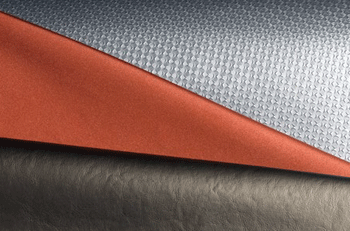
US demand for coated fabrics to reach 680 mn square yards
Demand for coated fabrics in the US is projected to advance 3.2 percent per year to 680 million square yards in 2018, an acceleration from sluggish gains posted between 2008 and 2013.
Demand for coated fabrics in the US is projected to advance 3.2 percent per year to 680 million square yards in 2018, an acceleration from sluggish gains posted between 2008 and 2013. Growth in the manufacturing sector will provide opportunities as coated fabrics are used in a number of durable goods produced in the US, including motor vehicles, industrial machinery, and marine equipment. Additional growth will be derived from a turnaround in nonresidential construction spending. These and other trends are presented in Coated Fabrics, a new study from The Freedonia Group, Inc., a Cleveland-based market research firm.
Advances will be propelled by the large motor vehicle market, which will account for 29 percent of additional area demand through 2018. According to analyst Pamela Safarek, ¨Coated fabric demand will grow from a high 2013 base that reflects the recovery in vehicle production from 2009 lows.¨ Gains will be promoted by a higher number of airbags per light vehicle. Advances will also benefit from the increased incorporation of polyurethane-coated fabrics in upholstery and interior trim in light vehicles.
Coated fabric use in the production of awnings, canopies, and wallcoverings is expected to post the fastest gains through 2018, benefiting from increased spending on construction and remodeling. Although these markets are much smaller than motor vehicles, together accounting for only six percent of coated fabric demand in 2013, sales are expected to grow more than twice as fast as the total market. Demand for awnings, canopies, and wallcoverings is tied to remodeling and building activity, both of which will rebound from declines experienced between 2008 and 2013.
Spurred by a continued improvement in manufacturing activity, coated fabrics will find opportunities in the production of furniture, industrial machinery, marine equipment, and protective clothing, among others. Protective clothing, for example, will benefit from increased activity in manufacturing processes that require workers to wear protective safety gear (e.g., chemical, pharmaceutical, and electronics production), as well as from steady use by medical, military, and emergency responder personnel. Coated Fabrics (published 07/2014, 310 pages) is available for $5,300 from The Freedonia Group, Inc.
For further information:
Corinne Gangloff
Phone: 440.684.9600
Email: pr@freedoniagroup.com
Website: www.freedoniagroup.com



